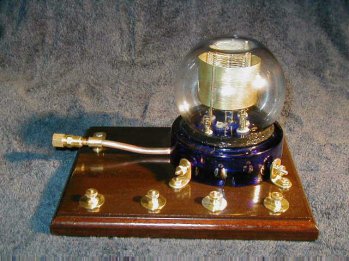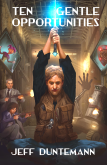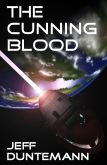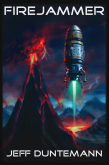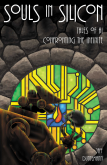 Well, as a fair number of people have told me, the logo Carol and I saw the other day was the “hatchet man” icon of Insane Clown Posse, a hip-hop duo from Detroit that I’ve never heard and probably won’t. Key to finding the figure online is knowing that what he’s holding isn’t a map or a piece of paper but a hatchet. (In fact, it looks a lot more like a meat cleaver.) There’s also a girl-version of the icon, with a ponytail, but what we saw on the gate of a pickup truck was almost precisely what I show above left.
Well, as a fair number of people have told me, the logo Carol and I saw the other day was the “hatchet man” icon of Insane Clown Posse, a hip-hop duo from Detroit that I’ve never heard and probably won’t. Key to finding the figure online is knowing that what he’s holding isn’t a map or a piece of paper but a hatchet. (In fact, it looks a lot more like a meat cleaver.) There’s also a girl-version of the icon, with a ponytail, but what we saw on the gate of a pickup truck was almost precisely what I show above left.
We had a relatively small gathering last night, but that was all right, as there were few enough of us to all sit on the two couches and talk about everything from dogs to SF to classic aircraft of the Strategic Air Command. We spoke of that lunatic Lt. Col. Bud Holland, whose lifelong ambition appears to have been to roll a B-52. (Detailed discussion here.) He tried, he failed, and you can see a video of the results here. Eric Bowersox and Sabrina Hoyt brought some Mountain Dew Throwback, made with real sugar instead of corn leavins’, and the original product artwork on the cans. There were intermittent thunderstorms all afternoon, but we had enough time between microcells to grill a batch of smoked brats and Ranch Food Direct burgers. By sheer coincidence both Mike Reith and Peggy Sargent brought cream puffs, and it had been so long since I’d had one that I’d mostly forgotten what cream puffs were. That memory came back in a big hurry, heh.
Alas, the thunderstorms prevented me from getting any Field Day time in yesterday, and with less than an hour remaining in the contest and yet another thunderboomer passing overhead as I write, I doubt I’ll get any time in this year at all. I created what I had hoped to be a low-profile inverted vee, and in truth, when I told people I had antenna off the back deck, several people looked and just didn’t see it, when when I was pointing right at it. It’s designed to be portable, and is attached to the deck railing with bungee cords. I’ll try to get a couple of days’ contacts with it, then roll it up and put it back in the garage.
There was more bear action yesterday. Late afternoon, our doorbell rang, and it was our new neighbors from across the street. Heather and Glen had gone for a walk with their two small boys, aged two and four, and left their garage door open. When they returned, sho’nuff, a bear was in their garage ransacking their garbage can. Heather asked to bring her boys inside, but about then Glen came back and said he’d driven the bear off by throwing rocks at it, after which it vanished up the street and ran between two other houses. (Glen’s an Army officer. Spend some time in Iraq and bears lose a lot of their mystique.) I’m guessing it was the same bear I saw yesterday about lunchtime, eating dog food down in our gully near our back door. It seems a little too comfortable with people and a little too willing to be out and around during the day to stay here, and if it comes back too much we’re going to have to put a call in and see if it can be relocated.
Lots of leftovers from last night, and I’ll be grilling Ranch Food Direct burgers again this evening if the rain will just stop for half an hour. The West is getting soaked this year. Our local reservoirs are full, and western Nebraska’s massive Lake McConaughy is refilling (after a 9-year drought that the doomsayers warned would be permanent) at a rate of two feet per week. When we first saw it we marveled at the broad sand beaches, which were not in fact beaches at all but recently exposed lake bottom. It was about 30% full when we first saw it several years ago. It’s now over 80% full and the water level is rising fast. (Note the end of the curve on the graph, and then see this graph to get a sense for the insane amount of water flowing into it this year.) We hope to take a long weekend up there before the summer’s over.
This coming week should be fairly peaceful. I intend to do some fiction writing and perhaps even finish an experiment I have on the bench downstairs, concerning how well IN23A microwave diodes serve as AM BCB detectors. What I know of detector theory tells me that such detectors should be socko. We’ll find out–that’s what science is for.
 It’s fawn season again, and yesterday we saw a mother deer leading a fawn that was no bigger than Jackie, if perhaps a little taller. Figure that: A deer the size of a bichon. The poor thing can’t be more than a day or two old, and it’s wobbling unsteadily around the First Curve on Stanwell St., where teenagers roar by in their parents’ elephantine Escalades and probably wouldn’t even notice if they had small animals wedged in their grilles. (We’re mostly thankful that they don’t miss the curve and plow through my office window.) Last night about 8 or so, mom had gone off somewhere, and junior was simply lying on our neighbor’s mulch, about six feet from the pavement. It wasn’t as obvious as it could be, but there are much better hiding places in the area. I guess we can think of it as evolution in action.
It’s fawn season again, and yesterday we saw a mother deer leading a fawn that was no bigger than Jackie, if perhaps a little taller. Figure that: A deer the size of a bichon. The poor thing can’t be more than a day or two old, and it’s wobbling unsteadily around the First Curve on Stanwell St., where teenagers roar by in their parents’ elephantine Escalades and probably wouldn’t even notice if they had small animals wedged in their grilles. (We’re mostly thankful that they don’t miss the curve and plow through my office window.) Last night about 8 or so, mom had gone off somewhere, and junior was simply lying on our neighbor’s mulch, about six feet from the pavement. It wasn’t as obvious as it could be, but there are much better hiding places in the area. I guess we can think of it as evolution in action.
